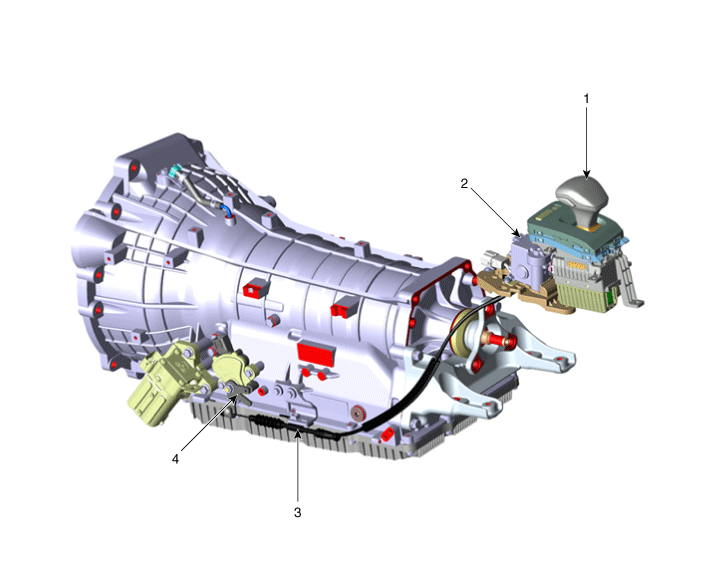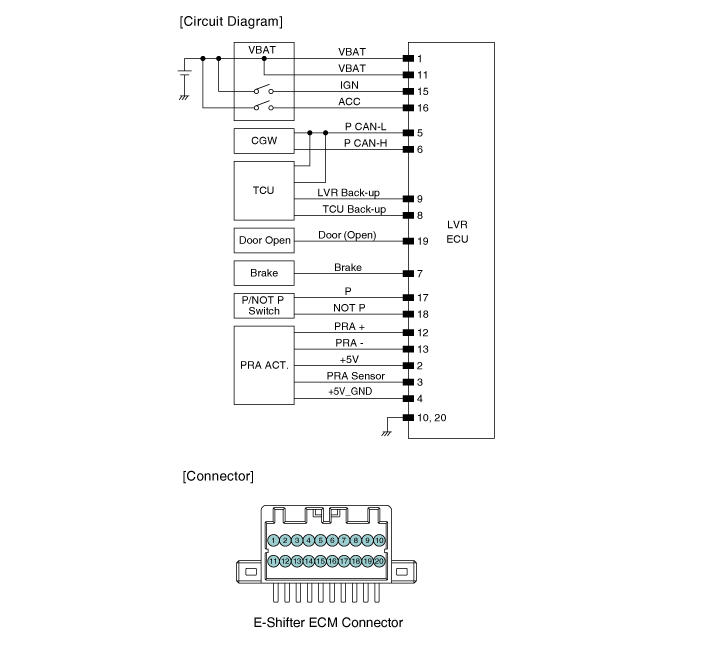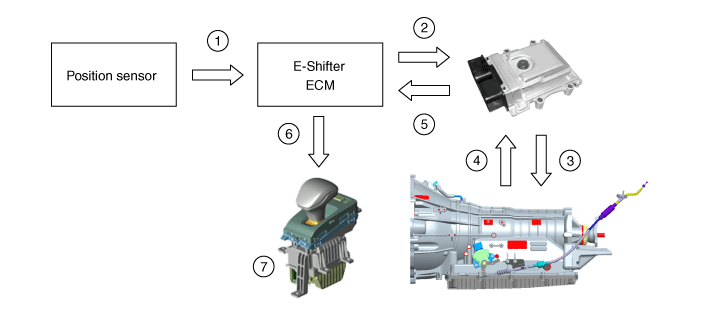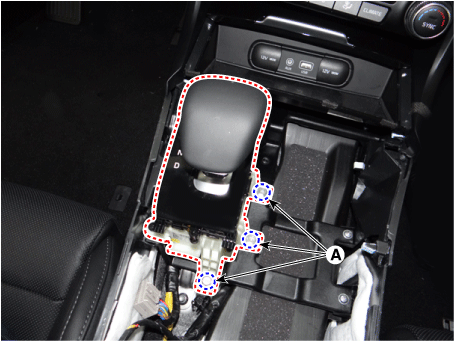Kia Stinger: Automatic Transmission Control System / E-Shifter
Components and components location
| Components |

| 1. E-Shifter 2. Parking release actuator |
3. Parking release cable 4. Parking release lever |
Schematic diagrams
| Circuit Diagram |

Description and operation
| Description |
| • |
Operating Principle: Any change in the lever position is detected and transmitted via electric signals from the electronic shift lever ECU to the TCM. |
| • |
Function |
| – |
Gear shifting signal transmission |
| – |
Shift lever display |
| – |
Shift locking |
| – |
System failure diagnosis |
| • |
Electronic shift lever operation pattern
|
| • |
Operation order Flow diagram
|
| 1) |
The lever position is detected and the data is sent to the electronic shift lever ECM. |
| 2) |
The lever position information is transmitted from the electronic shift lever ECM to the TCM (CAN + Hard wire). |
| 3) |
The TCM controls the AT so that the mode reflects the lever position. |
| 4) |
The TCM checks the information on the final shift mode of the AT. |
| 5) |
The TCM sends the information on the final shift mode to the electronic shift lever ECM. (CAN) |
| 6) |
The Electronic shift lever ECM sends the information on final shift mode to the indicator. |
| 7) |
Current information on the final shift mode appears on the indicator. |
Repair procedures
| Removal |
| 1. |
Remove the upper console cover (A) using the remover.
|
| 2. |
Disconnect the main connector (A).
|
| 3. |
Loosen the E-shifter mounting screws (A).
|
| 4. |
Loosen the E-shifter mounting bolts (A).
|
| Installation |
| 1. |
Install in the reverse order of removal. |
 Parking Release Actuator (Parking Release Cable)
Parking Release Actuator (Parking Release Cable)
Components and components location
Components
1. E-Shifter
2. Parking release actuator
3. Parking release cable
4. Parking release lever
Schemat ...
 Inhibitor Switch
Inhibitor Switch
Specifications
Specifications
Item
Specification
Output type
PWM
Power supply (V)
5
Comp ...
Other information:
Kia Stinger CK 2018-2025 Service Manual: ESP(Electronic Stability Program) System
Components and components location Components Location 1. HECU module 2. Front wheel speed sensor (2WD) 3. Front wheel speed sensor (AWD) 4. Rear wheel speed sensor Description and operation Description of ESP Electronic Stabil ...
Kia Stinger CK 2018-2025 Service Manual: Audio Unit
Components and components location Components Connector Pin Information No. Connector A Connector B Connector C Connector D 1 Rear door left speaker (+) ⁻ ⁻ ...






